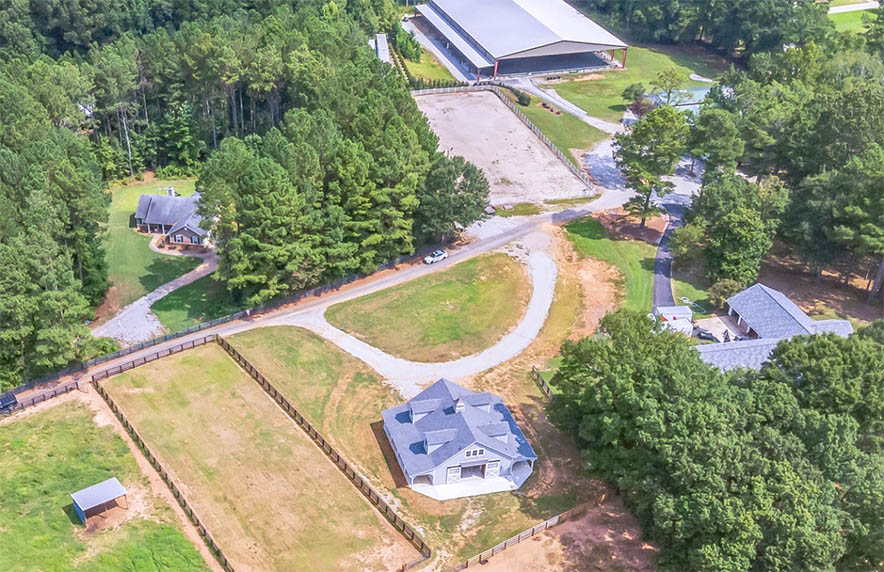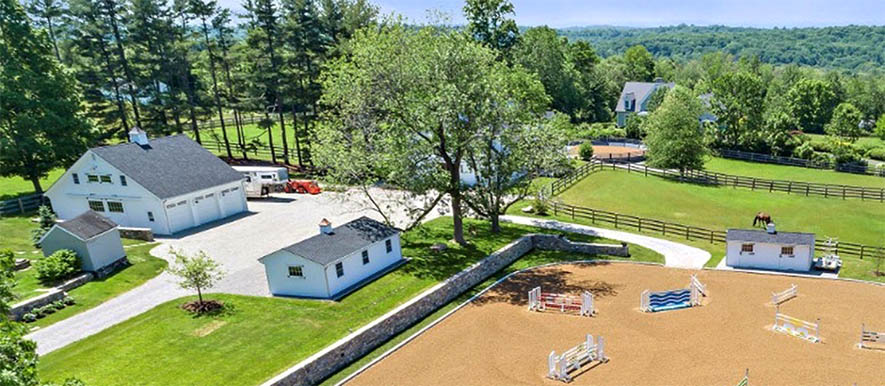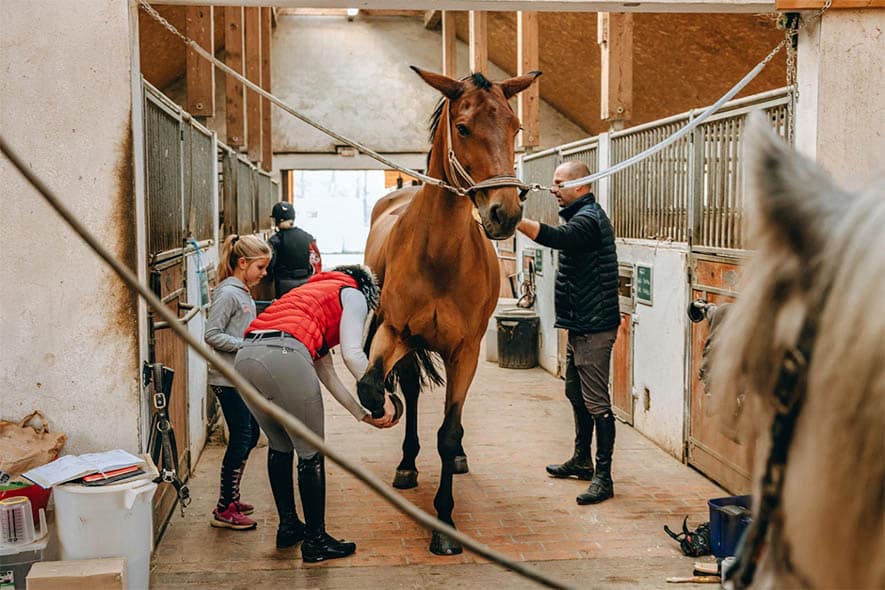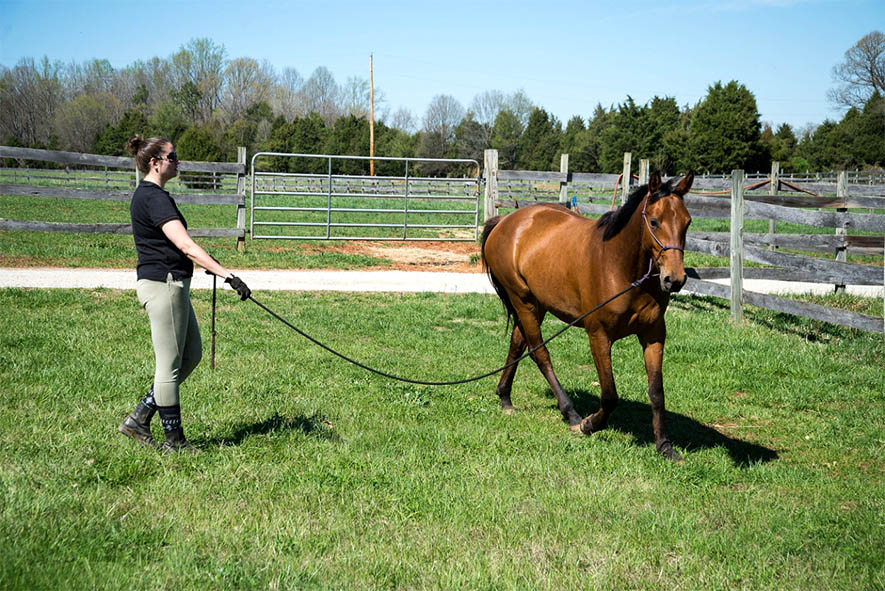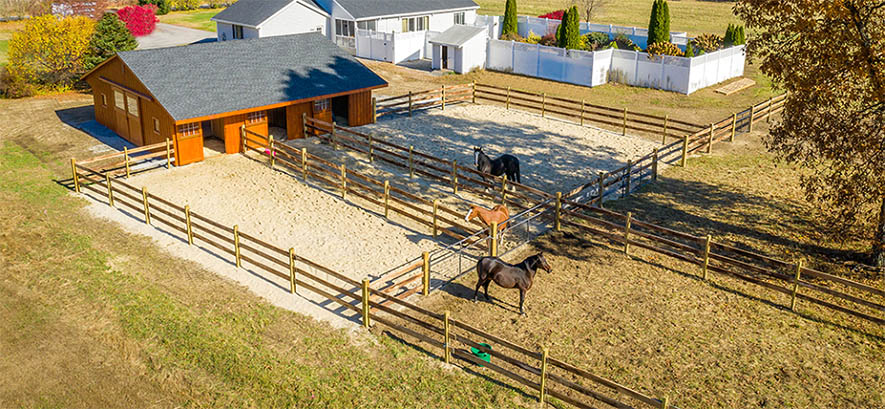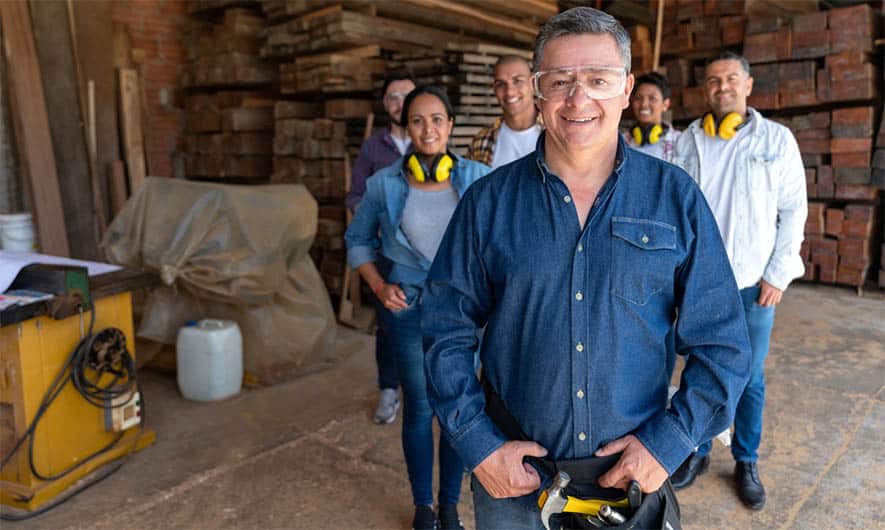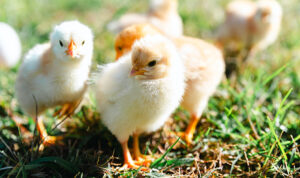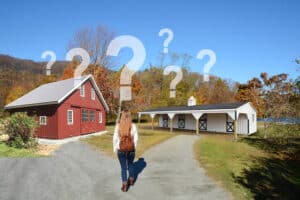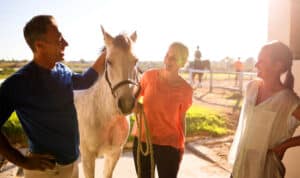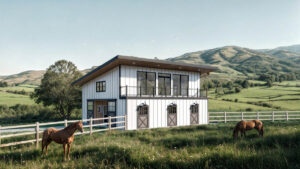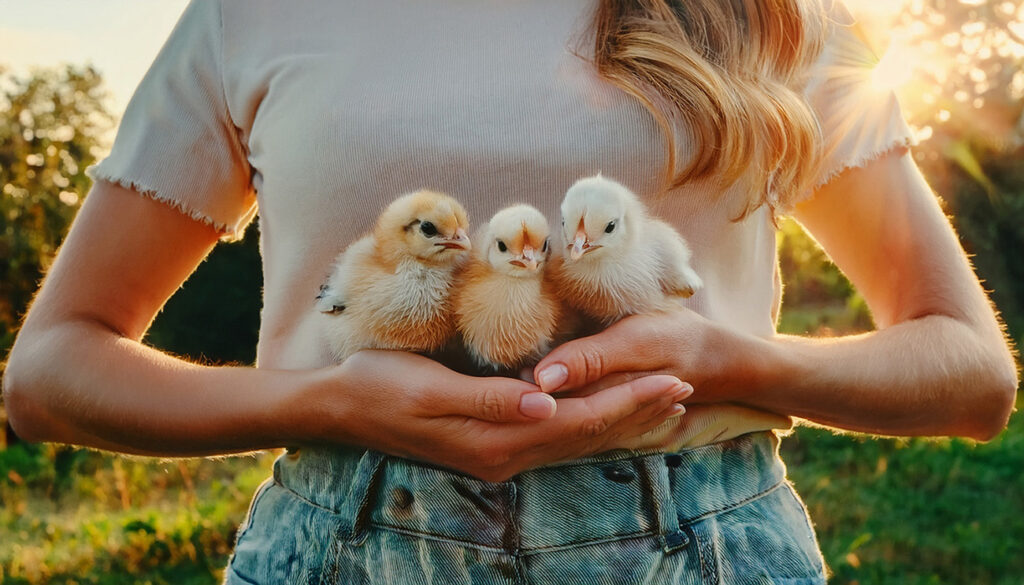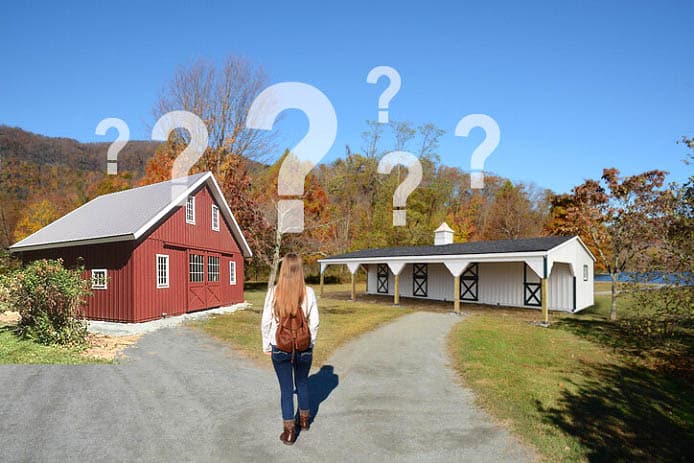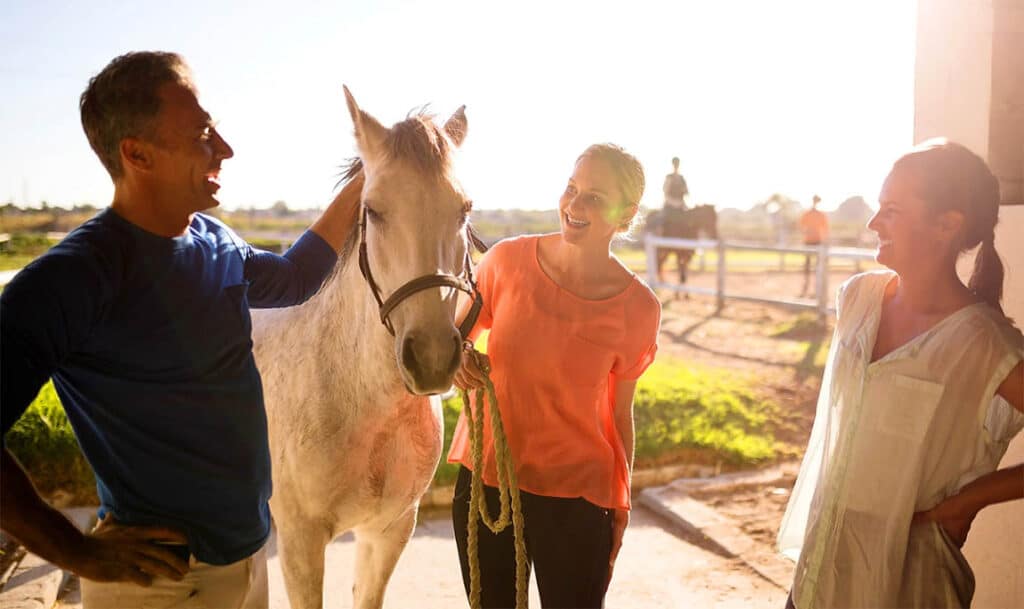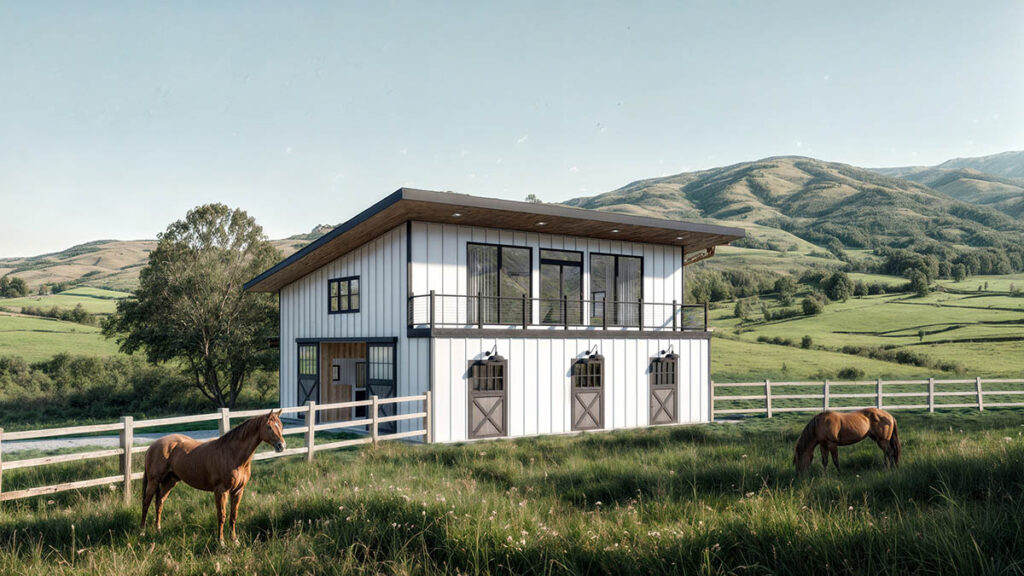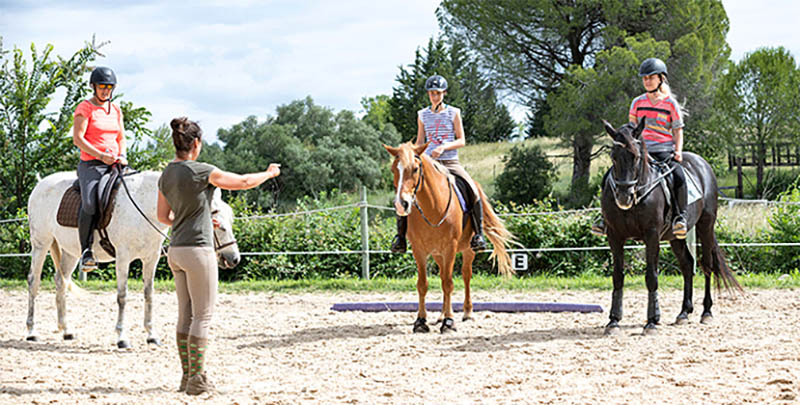The idea of building two horse barns instead of one to develop your horse business is double the fun and double the pleasure, especially when it comes to building horse farm income. While obviously the capital outlay is doubled, so is the opportunity to build a diverse business portfolio. This inherent diversity can help assuage any downturns in the marketplace and also provides the initiative to maximize sales in areas that are trending upward in popularity.
To best understand the benefits of how the expense of the enterprise is optimally leveraged it is well worth consulting an accountant experienced in farm business operations. Between amortization and depreciation, possible interest deductions on financing costs or tax credits for school or local taxes, the financial spin on the initial capital outlay can make the dual barn project viable.
Additional benefits of the two horse barn system are flexibility within annual business planning, ‘on hand’ enthusiastic help availability, and educational event opportunities that can be held to garner business income.
The practice of larger horse farms operating both a lesson/boarding horse barn and another structure to house their own private horses used for show/breeding/sale or for horses coming in for training is not an uncommon occurrence. There are good reasons why this is a great idea and with some entrepreneurial spirit at the ready, many horse property owners can enjoy great success building an equestrian business.
The structures at the facility, and their design for fit, form, and functionality constitute the major expense in the farm project development.
Here are some of the pros for opting to build two horse barns instead of just one. And remember, the barns don’t have to be identical. Barns come in a myriad of designs and price points. Today’s popular modular construction offers endless possibilities for complementary styles. The bounty of options in siding/roofing/colors and configurations in these almost ‘instant’ set up structures that are quickly on hand facilitate the chance to get busy building up business quickly. Let’s take a look:
- Two horse farm business income streams and two different brands can be devised that offer marketing across two entities that can cross promote and market services.
- Flexibility in business planning and income and expense management.
- Mitigates liability and accident risks.
- Offers better time management opportunity for owners/trainers/staff.
- Provides options for different caregiving practices and schedules at each barn.
- Potential labor resource for private use barn with enthusiastic local equestrians keen to improve their talents/income.
- Helps defray likelihood of profit reductions due to a one-line business model experiencing interruption due to issues such as disease outbreaks or market changes.
- Provides privacy and security for owner’s private horses, clientele, and business.
- Offers suitability in structure design for different purposes for each build.
Cross-pollinating between the two business enterprises and cross-marketing can elevate the exposure and profit for both. For example, this could be in the form of semester-based lesson programs that include educational visits to the private barn on a schedule of events designed around elevating the boarder/student experience. Such events can yield additional horse farm income and brand loyalty and provide added value to those clients.
Managing each barn on a separate basis gives the opportunity to choose different product lines, feedstuffs, care levels, and hence labor expenses for each business entity.
Horse property owners that run boarding facilities often have horses of their own on site that are utilized for competition, breeding, sales or are brought in for training. The separation of what are likely high energy and high value horses, such as breeding stallions or advanced competition horses, from the lesson/boarding equines and their visitors makes sense from a safety and security standpoint.
Human and equine interaction is limited from boarders/students and their entourage of companion visitors to the private barn equine residents. This negates the risk of injuries occurring due to proximity or direct interaction between folks not as experienced around exuberant horse stock and provides more peace and quiet for horses and humans in each barn that can be run on separate schedules.
The separation of horses coming and going from competitions and young breeding stock or gestating mares that are vulnerable to disease or infection from boarders’ horses can also lessen the risk of spread of contagious diseases.
Two horse barns also offer the opportunity to establish different routines, feed and bedding supplies, tack, and equipment, and a different level of security can be provided at each barn.
The exclusion of a myriad of people coming to and from the barn all day long at the private barn also yields more time for the owner/trainer to work in peace without interruptions and creates a private realm where focus can be directed to the training of the horses and work at hand.
Many competition riders like to work their horses in the morning hours when both horse and rider are fresh, and then head over to the lesson barn in the afternoon to give instruction.
The lesson or boarding barn can be a source of potential labor especially during busy breeding times and offer a potential future client base for horses that are for sale either those bred at the farm or those brought in for training/sale on consignment.
If a catastrophic event occurs that adversely affects one business, for example, a pandemic that rules out visitors for lessons and boarders entering the property, the farm owner has the opportunity to continue building their other business.
A structure that is purposely designed for one task such as handling lesson horses and students where a viewing room, wide aisles and an office is required may not best suit the private horse owner’s needs. The owner’s horses may be better stabled with direct outdoor paddock access from their stalls via exterior Dutch doors as they may not be exercised every day, or the barn may incorporate larger stalls with surveillance for foaling out.
On the other hand, barns built to house competition horses, who generally require much more groom time and prepping than lesson horses, can be fashioned to offer extra designated bath/groom stall space. Additionally, these high-end equine athletes will need specialist medical and/or training care where expensive equipment such as equine water treadmills or specialist medical instruments will be utilized. These products will need a space to live free of inquisition from passersby.
When you design your farm with a view to both function and profit the dual barn design offers immense flexibility for expansion of your business model. One business can literally feed the other in harmony, while keeping your private business and clients private.
For many equestrian property owners, the lesson or boarding business is later discarded and is merely a steppingstone to their end goal or ambitions. When their main business focus of breeding/training/competing/sales attains healthy profitability and brand recognition, the need for the lesson/boarding enterprise is eliminated. This can also occur vice versa, especially as competitors age up or out of active participation in showing or horse breeding.
Even if you have one barn already constructed on the property and operating, the addition of a second string to your line up can make good business sense as well as fulfilling dreams that might have sat on the back burner due to previous work commitments, responsibilities of family life or financial constraints.
As with any type of business, there is a learning curve to developing the type of clientele you want to work with and establishing a good reputation within your field. The best possible care for the equines in your care, custody, and control, should be the primary goal and driving force in its operation. The rest will naturally follow.
Just as the boarding barn or trainer that offers the cheapest rates for their services may not be the best choice, don’t be fooled by substandard products at cheaper price points.
Remember that the structures that are cheap to build now may not offer the durability or usability long term that a well-run business is founded upon. Peeling paint, rusting hardware, poor stall design or lesser grade wood or metals used in the construction of a horse barn will not stand the test of time or the abuse that horses will inevitably dish out. And labor costs and maintenance needs will eat up both the budget and your time and energy.
Find a reputable company to collaborate on your build and design. Many companies will offer a discount for multiple building purchases, and a knowledgeable staff experienced in horses as well as horse barns can bring cost saving ideas to the table and help direct you where best to spend your money and offer areas where costs may be cut.
The more flexibility in the styles and types of horse barns the company offers, the more flexibility you will enjoy in pricing and designs. And of course, the barns do not have to be identical though should be complementary in their style and color scheme.
Dual barns with dual horse farm income bases are a good option for all the reasons above.
Don’t be shy to give it a try.


